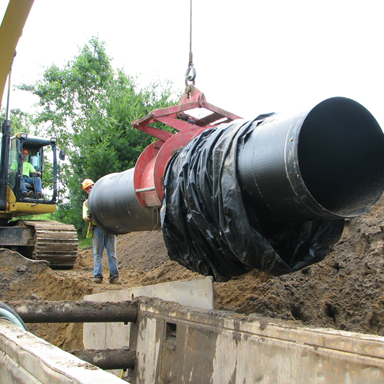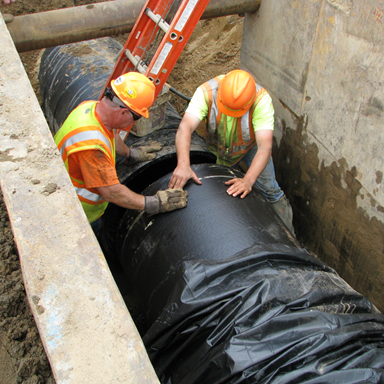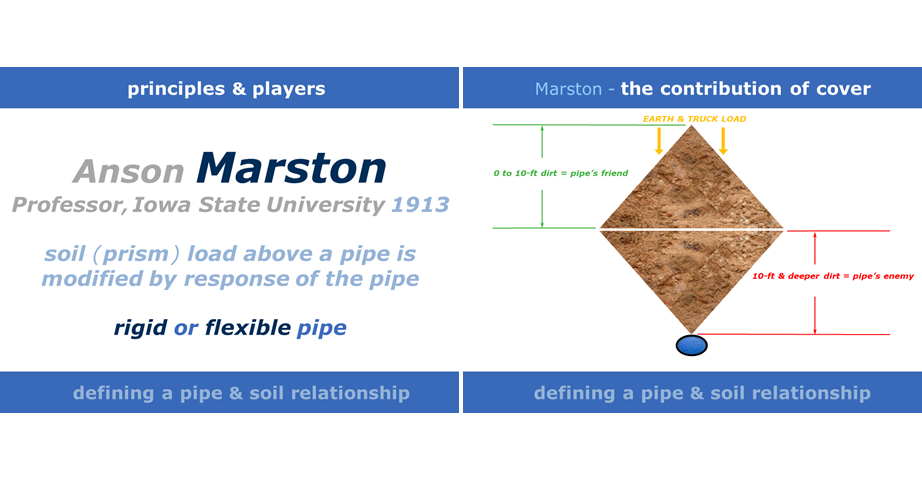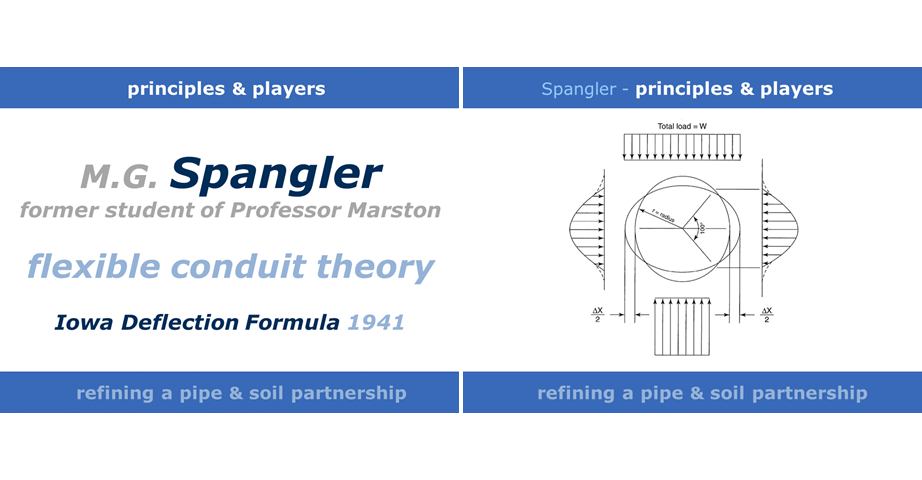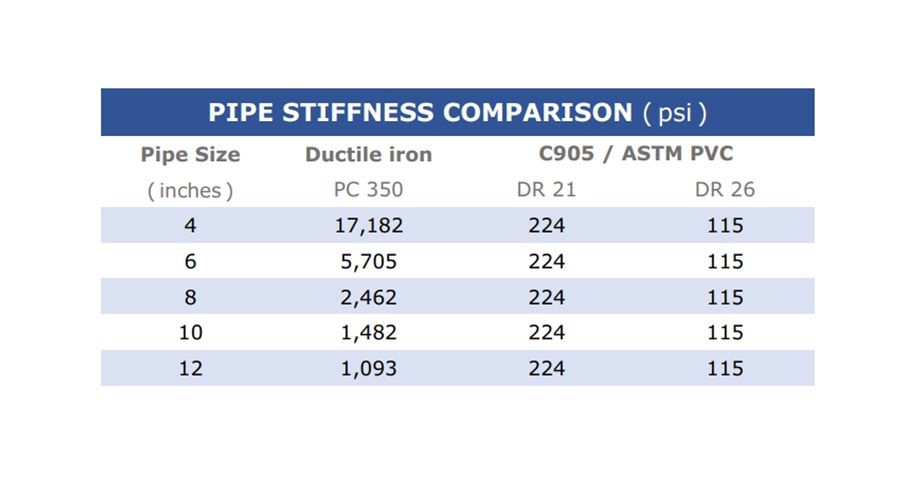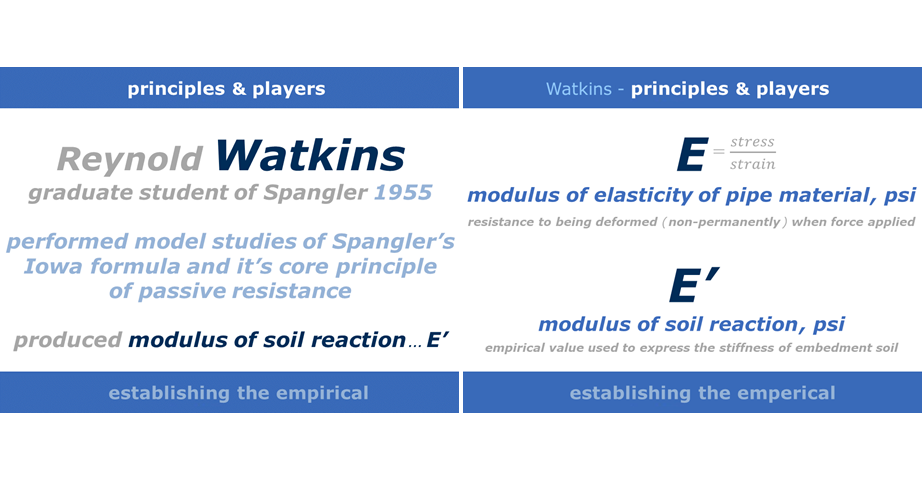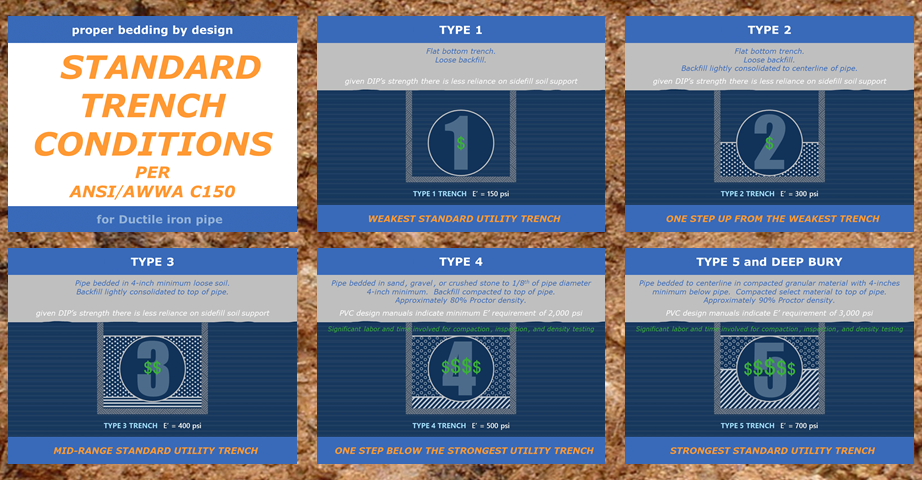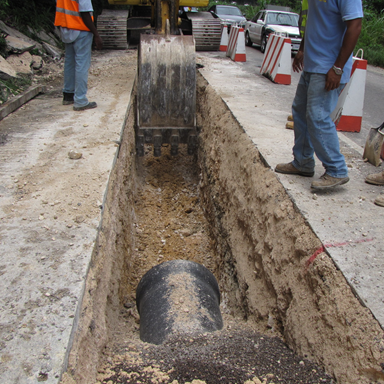Did you know the mattress industry is one of the oldest continuous industries in the world? The first mattresses were believed to have been manufactured in 37 BC in Persia. Today, more than 35 million mattresses are shipped world-wide to replace those that have been in service for an average of seven years.
So, why are so many mattresses in need of replacement in short order? Why can’t you go through a full evening of watching television without seeing multiple commercials selling all varieties of mattress types? It seems, at times the entire mattress industry is built upon uncomfortable people troubled by spending nights on depleted bedding, with aching bodies due to inadequate support from their existing mattress. This poor support causes “deflection” of the body in critical areas which eventually creates aches, pains, and an unpleasant nighttime experience full of tossing and turning.
So, what does this have to do with Ductile iron pipe (DI pipe), you ask? This article will discuss how setting improper bedding in a pipe trench can cause sleepless nights for the water company and its crews due to pipe failures, seemingly always at night — as it is my experience that most large main breaks typically occur after dark!
Why Do They Call It Bedding?
When a pipeline is installed in a trench, proper bedding of the pipeline is essential to assure the pipe does not inordinately deflect. Thus, like a mattress, the "bedding" must be designed to support the respective pipeline material installed and control its interactions with external loading upon the pipeline. Somewhat like humans who may prefer a softer or harder mattress, various pipe materials "prefer," or should we say "require," a specific type of bedding to not deflect and not fail due to the existence of stresses upon them.
Let’s start our engineering discussion of proper pipeline bedding with the following formula:
We can see from the above formula; there are two factors directly involved in determining how much a pipe deflects within a trench when external loads are consistent—the STIFFNESS of the SOIL and the STIFFNESS of the PIPE material. So, when flexible pipe material is utilized, such as plastics, to prevent deflections that would ultimately lead to pipe failure, SOIL stiffness must be increased to compensate. The ongoing interactions, i.e., the dance between the pipe and surrounding soils, dictate the pipeline's success or failure.
Clarifying Deflection
In this article's context, the term deflection is an expression for a change in the pipe barrel's shape when exposed to loading, and especially external loads, such as from backfill and/or the live loads of traffic above. This is different from joint deflection, such as what the contractor may employ during the pipeline's construction. Joint deflection relates to the horizontal and/or vertical offset of the pipe barrel as it extends out from the joint itself. Check out this Iron Strong Blog by my colleague, Carolyn Lopez, about pipeline assembly.
A flexible conduit is defined as one that can deflect, i.e., temporarily distort slightly oval, and return to its original circular shape when the loading is removed. The minimum deflection capacity to qualify as a flexible conduit is 2 percent of the original outside diameter.
When designing DI pipelines, the deflection limit incorporated to protect the less flexible interior linings is set at 3 percent for cement-mortar linings and 5 percent for more elastic linings such as epoxies. These design deflection limits are the control points when selecting your trench backfill materials and conditions. The backfill is designed to absorb some of the loads passed through the pipe to the trench sidewalls as the pipe deflects. The deflection design limit is the DO NOT PASS GO, DO NOT COLLECT $200 card in the game of Pipe-opoly.
What Is Soil Stiffness and How Does it Effect Buried Pipelines?
Soil stiffness is the ability of the soil to resist forces placed upon it. Thus, as you can see in the diagram below, the stiffer the soil, the more resistance it offers in preventing a pipe from deflecting or going “too far oval” when external loads are applied.
Thus, going back to our original formula, if the soil resistance is not strong enough to “bed” the pipeline properly, then external load forces could create excessive stress on the pipeline. The barrel deflection potential is greater than the deflection limit of the pipe's lining, which could damage or disband the lining under those loads. In a worst-case scenario, poor trench conditions could lead to r extreme stresses upon the pipeline's barrel that could fail the pipeline via the barrel's collapse.
Conversely, we see that pipe material with a greater stiffness can withstand a larger external load component with less dependence on the soil for support. These Bending Stress (failure) and Deflection Limit (oval control) designs are among the core principles covered in the ANSI/AWWA C150 standard for Thickness Design of Ductile Iron Pipe.
Noted above is just an example of how dramatically measures of pipeline stiffness can vary. Obviously, the very significant differential of pipe stiffness when comparing DI pipe to that of PVC pipe evidences the need to install PVC pipe in a much stronger trench setting or bedding. For more comparisons between DI pipe and PVC, see this Iron Strong Blog by my colleague, Jerry Regula.
What are the differences and advantages of Ductile iron over PVC pipe? Many things! Use this handy comparison sheet to ensure you specify the safest, durable, and longest-lasting pipe for your next project.
The downside of being "more flexible" or, better said, "less stiff," such as with PVC compared to Ductile iron, is that more of the load gets passed along to the surrounding soils. The empirical value (E) representing pipe stiffness is known as the Modulus of Elasticity of Pipe Material, expressed in psi. The E for DI pipe is 24,000,000 psi and just 400,000 psi for PVC. With DI pipe being 60-times STIFFER than PVC, the DI pipe can obviously carry greater loads directly, thereby passing less of the loading off to the bedding.
A Measure of the Bedding Strength
The term E’, spoken as E-prime, refers to the Modulus of Soil Reaction and is defined as an empirical value used to express the stiffness of the embedment soil in predicting flexible pipe deflection. Thus, when constructing a suitable environment for a pipe to be installed in a trench, this factor must be considered in many cases to accommodate our earlier pipe deflection formula.
Suppose the stiffness of the pipe material itself is inadequate to withstand external forces. In that case, trench bedding must be provided with appropriate E' measures wherein the surrounding soil will add support against the pipe wall to mitigate any excessive deflection, ultimately leading to the failure of the pipe or it’s lining.
It should be noted that the design of a Ductile iron joint, where a spigot is inserted into a bell to radially compress a gasket watertight, contains specific parts such as the rear shoulder, gasket seat, bell throat, and front lip that reliably serve to prevent leaks at the joints from over-deflection of the barrel. These combined parts retain the barrel deflection in and near the joint at far lower percentages than could fail a pipe or lining some distance away from the joint under the same loading and trench parameters.
The formation of trenches to provide various supporting qualities to the constructed pipeline can be categorized into Trench Types. A Type 1 trench is one wherein minimal soil support is provided. As the type of trench increases in nomenclature, then the bedding of the pipe becomes more stable, with a Type 5 and Deep Bury trench being constructed to provide maximum side support by the bedding material for the pipeline. Shown below is a schematic outlining the various trench types as just noted:
Effectively, as these trench types elevate numerically, the E’ value does so accordingly.
Why Does the Value of E’ Even Matter?
The proper bedding of a pipeline in a trench can be paramount in preventing pipeline failure. Thus, balancing in design the strength of the pipeline material itself with the constructed trench is a necessity in many cases when considering successful construction. Due to its lack of stiffness, a flexible pipe like PVC must be complemented by a fully supportive soil. More robust pipe material like DI pipe can withstand the same amount of exerted external load with less bedding support.
Is There a Cost Involved?
Absolutely! Many times, Ductile iron pipe can be installed using the native soil excavated from the trench with applicable compaction, thus only requiring a Type 1 trench or Type 2 trench for larger diameters. Conversely, again using the example of PVC pipe, a Type 5 trench is needed to provide adequate side soil support to prevent excessive deflection. Required E' values in this circumstance can respectively vary from 150-300 psi for DI pipe to an E' required for PVC, equating to 2,000 psi. Thus, installing DI pipe may require minimal bedding material for construction aside from the native soil provided on-site.
Consequently, the use of PVC pipe requires, in most instances, the use of select bedding material to construct a trench with an E' strong enough to support the pipe. Hauling away native soil and then hauling in select material to construct a trench with a sufficient E' value as needed for PVC pipe adds significantly to the installation cost.
Furthermore, when soil compaction is needed per the design considerations, such as in Type 4 and 5 trenches which are commonly specified when using PVC pipe, beyond the cost of select bedding materials is additionally compounded by the costs of performing the compaction and testing the compaction all along the pipeline to certify it so, production rates for installation are hampered dramatically. And every contractor’s first fright is the reality that TIME truly is MONEY.
See this link for another Iron Strong Blog discussing the Importance of Depth of Cover When Installing Ductile Iron Pipe, by my colleague Gary Gula.
How Do We Know That Ductile Iron Pipe Is Really That Strong?
The thickness design is presented in “ANSI/AWWA C150/A21.50” in standards by the American Water Works Association. Its Standards Manual M-41, External Load Design, Bending Stress Design, and Deflection Design is outlined with respective earth load and truckload design formulas.
The same section of the M-41 Manual (Chapter 4) contains various trench types, as highlighted earlier, showing various laying conditions of Ductile iron pipe. This specific engineering approach to DI pipe design to withstand external loadings surpasses the criteria set forth for most pipeline materials used in the water and wastewater industry.
Many times, alternate materials other than Ductile iron pipe are solely designed based on internal pressure capability, leaving the project design engineer to “build” around the pipe the needed support system needed to withstand external loading forces. Once again, “building” this trench support system can be expensive in attempting to construct required E’ values, as mentioned earlier in the article.
Need Assistance with Your Waterworks Project?
To avoid sleepless nights caused by worry for potential pipeline failures, for both you and your utility crews, be sure to contact your local McWane Ductile Sales Representative. We are happy to discuss any concerns you may have regarding the best pipeline material choice and adequate bedding for your waterworks project.



